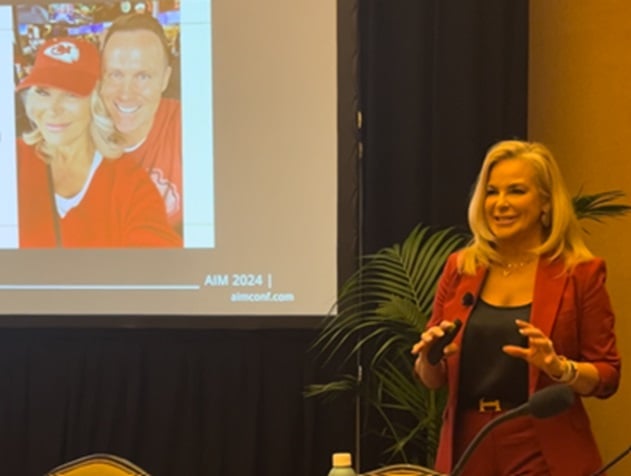Theodore Roosevelt asserted that “the most important single ingredient in the formula of success is knowing how to get along with people.” This principle lies at the core of business development— the art of cultivating the customers, markets, and relationships that produce long-term value and drive organizational growth. Getting along with people and bringing the right people together is a key driver of success and can transform the way organizations approach business development.
Standard tactics for building business relationships have changed dramatically in the past decade. Postal mailers and yellow page ads are practically obsolete for making initial contacts with potential customers. Mass e-mail? Straight to the spam filter. Cold calls? Forget it. If they don't know you, you won't get past caller ID. Unless you've got a personal connection, it is very hard to even make it onto a prospective client's radar. Often, making that connection requires drawing on relationships with other professionals who can facilitate an introduction.
Traditional networking events collect a crowd together in the hope that proximity will foster connection and collaboration. Whether you meet people who might share your goals is largely left to chance. So how do you raise the odds?
- Shrink the group to a more manageable size and curate the attendance list to increase the likelihood of making valuable contacts. Salon-type events with 10-15 carefully chosen attendees at a dinner allow deeper interactions than a ballroom full of voices.
- Take advantage of industry initiatives and events like those sponsored by business publications and trade organizations to broaden your sphere and build visibility within the community.
- Instead of focusing solely on potential clients or competitors within your own field, change the formula to foster cross-industry connections. This can highlight opportunities that might not be obvious and lead to collaborations with related firms that can ultimately yield better, more comprehensive solutions for clients.
Crossing Industry Borders to Improve Client Options
In the interconnected world of commercial real estate, clients rely on services from a range of industries that operate largely independently from one another. Bringing together best in class professionals from legal, accounting, commercial real estate, and other adjacent professional services firms can generate conversations about areas where these industries intersect. Building on a more comprehensive and diverse set of experiences and capabilities, these cross-industry collaborations bring more value to everyone involved. This integrated approach can expand the client base of the individual companies while providing better approaches to meet client needs.
Capitalizing on the opportunities these relationships present forms a foundation for business development that can be integrated into a cohesive marketing strategy for lasting success. According to a recent survey by The Bloom Group, when a firm's marketing and sales arms work in concert, they create a greater number of viable leads, with a higher percentage that turn into work, at a much faster rate than when their objectives are isolated. Extending that network to include intersecting professional services firms, you multiply those efforts for even better identification of opportunities.
For example, bringing a real estate broker, lawyer, and accountant together to brainstorm strategies to implement upcoming changes in lease accounting standards could yield a cohesive plan for the client, prevent working at cross-purposes, avoid duplication of effort for a more efficient plan that covers all the necessary bases, and identify other clients who might benefit from similar services.
Prioritizing Face-to-Face Time over FaceTime
Technological innovations have transformed the way we work and communicate. Partners can collaborate regardless of their location, employees can work from home, and leaders can get important messages out to staff efficiently. Yet despite the clear advantages of digital tools and telework, there is no substitute for face-to-face communication when it comes to shaping business outcomes, building relationships, and fostering engagement.
Opportunities to interact and socialize foster a sense of community that builds a foundation of trust for better working relationships. They decrease the risk of miscommunication by allowing participants to see non-verbal cues and go back and forth to make sure everyone's on the same page. It makes it much easier to gauge some else's level of engagement by observing their body language and attentiveness.
Physical meetings also offer occasions for small talk and serendipitous conversations that build common ground and often lead to ideas that would never make it onto a conference call or email thread. They build a collaborative environment as people feed off each other's energy and ideas for more dynamic brainstorming and innovative problem solving. They are essential to building a culture of cooperation and trust that becomes essential for the more independent phases of a partnership and for dealing with any sensitive issues with tact and perspective.
With so many demands on our time, it might seem counter-intuitive to invest effort in relationships that aren't calculated to yield instant and obvious business benefits. But research has shown that these long-term connections are invaluable in creating lasting value and momentum. They allow partners to leverage each other's expertise, technologies, or intellectual property to expand their individual capacity to identify, research, and analyze new opportunities and to provide better business solutions to new and existing clients. Building these connections lays a foundation for “getting along with people,” as Roosevelt suggests, and creates a network that delivers value over the long term to truly develop your business.
Ryan Miller is Executive Vice President and Market Leader Mid-Atlantic Region at Newmark Knight Frank.
Want to continue reading?
Become a Free ALM Digital Reader.
Once you are an ALM Digital Member, you’ll receive:
- Breaking commercial real estate news and analysis, on-site and via our newsletters and custom alerts
- Educational webcasts, white papers, and ebooks from industry thought leaders
- Critical coverage of the property casualty insurance and financial advisory markets on our other ALM sites, PropertyCasualty360 and ThinkAdvisor
Already have an account? Sign In Now
*May exclude premium content© 2025 ALM Global, LLC, All Rights Reserved. Request academic re-use from www.copyright.com. All other uses, submit a request to [email protected]. For more information visit Asset & Logo Licensing.









